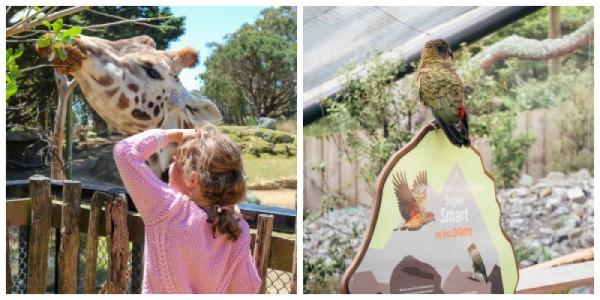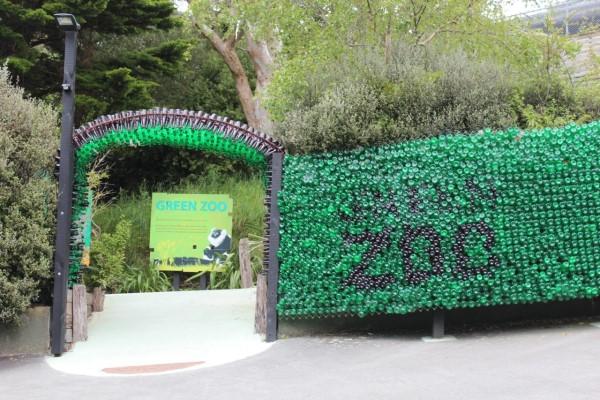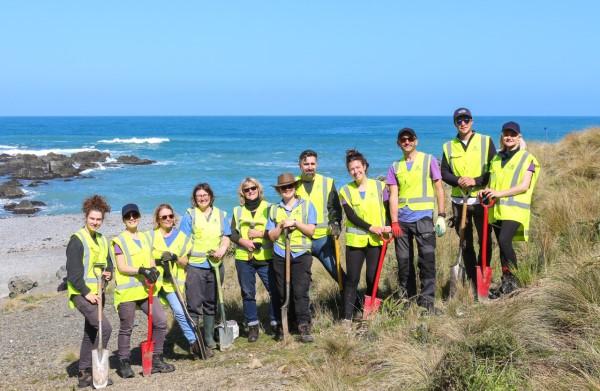Sustainability and care for the environment is ingrained into the very foundations of Wellington Zoo.
Opened in the Wellington suburb of Newton in 1906, it was New Zealand’s first zoo, and has carried that forward thinking and ground-breaking approach ever since. This ethos led them to take part in Toitū Envirocare’s Sustainable Development Goals materiality assessment and be a part of a leading group of New Zealand organisations aligning their strategic actions with sustainable outcomes.
The Zoo has a well-established sustainability strategy based around the trinity of environmental, social and financial responsibility. They are keenly aware of the state of the planet, with climate change and environmental destruction impacting animals and their habitat as well.

“We look after animals from all over the world whose existence is in danger from climate change, so it’s always been very important to us to make sure we do what we can”, says Amy Hughes, Wellington Zoo’s General Manager Communication, Experience and Conservation. “We really feel like we have to walk the talk. It’s hard to promote conservation and ask our visitors to do something for the planet, if we are not doing it ourselves”.
Wellington Zoo have also been Toitū carbonzero certified since 2012, and the programme forms a core part of their environmental strategy. However, in 2018 they decided to formalise their broader focus on sustainability and take the first step to embedding the UN Sustainable Development Goals (SDGs) into their business through a materiality assessment with Toitū Envirocare.
The UN SDGs are framework of 17 global goals agreed by than 190 world leaders at a historic summit in 2015. A blueprint for tackling the world’s most pressing social, economic, and environmental challenges, the goals are connected under three overarching themes: mitigating climate change, ending extreme poverty and fighting inequality and injustice.

The global nature of the goals was part of the appeal to the Zoo, who were determined to take a local approach to the global challenges. Throughout the process, they also discovered that conservation partners within their global network were interacting with the SDGs, giving them a shared framework for discussion.
“We really liked the idea of a universal language and goals, that helped give us a framework of where to go in the future”, says Amy.
As part of the materiality assessment, the Zoo first mapped their current initiatives against the 17 goals and were surprised at how well they scored. “One of the biggest surprises, once we sat down with the list of the SDGS, was how much we were already doing. It gave us a new perspective, that there were things we’re doing that we wouldn’t think was contributing to something like zero poverty, but actually by paying a living wage we’re contributing to that”.
The Zoo particularly wanted to identify a short list of goals that were relevant to them as an organisation, and where they could set and measure aspirational targets. “We didn’t want to approach it with what we were already doing”, Amy says.
“We wanted to challenge ourselves and consider our aspirations and where we want to be operating as an organisation, rather than what are we already doing that happened to fit in those SDG boxes”.
They also surveyed both staff and customers about what they considered were important to the Zoo, and what goals were important to them as individuals, running several staff workshops to capture the range of opinions. Amy believes this exercise was the most helpful to get multiple perspectives on what SDGs the Zoo can, and should, influence.
“It was an opportunity to really step back and see what other people thought, it has been really good to have our choices underpinned by those external voices”.

The Zoo identified a number of SDGs to work on: Life on Land, Life Below Water, Climate Action, Responsible Consumption and Production, Quality Education, and Sustainable Cities and Communities. Amy felt strongly that including Sustainable Cities and Communities was an opportunity for the Zoo to showcase their leadership in the space as they continue their sustainability journey.
“We have been operating for 113 years - we are part of the community. I think we can contribute more to our city and community in terms of sustainability, and really lead the way”.
The next step for the Zoo will be setting targets around the six goals and identifying how to progress the goals in a meaningful way. It’s a process that will help the Zoo stay accountable to their stakeholders: staff, customers and the animals that they care for. Those three key groups also allow the Zoo to translate their initiatives and progress in a way that is meaningful and concrete. “For example, when our staff deliver messages about using FSC-certified wooden products, we show how it relates to issues of deforestation, so customers can link their experience seeing a chimp or a tiger with the products they use or buy. It really helps us connect people to animals and then to the bigger conservation and sustainability picture”.
As for other companies who might be considering using the SDGs to guide their sustainability journey, Amy has one message - just start.
“The starting is the key point. Whether it’s looking at the SDGs or something else, anything that helps you start is a good thing. I would suggest no more than four or five goals if you are starting out and understand how your organisation can make it work for them. You could pick one, say we’re going to do everything that we can do, and have it grow from there”.